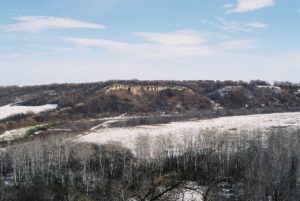In 1611, Henry Hudson was one of the first Europeans to sail into what is now known as Hudson Bay, where he was abandoned by his crew. The first European to reach present-day central and southern Manitoba was Sir Thomas Button, who traveled upstream along the Nelson River to Lake Winnipeg in 1612 in an unsuccessful attempt to find and rescue Hudson. When the British ship Nonsuch sailed into Hudson Bay in 1668–1669, she became the first trading vessel to reach the area; that voyage led to the formation of the Hudson’s Bay Company, to which the British government gave absolute control of the entire Hudson Bay watershed. This watershed was named Rupert’s Land, after Prince Rupert, who helped to subsidize the Hudson’s Bay Company. York Factory was founded in 1684 after the original fort of the Hudson’s Bay Company, Fort Nelson (built in 1682), was destroyed by rival French traders.

Pierre Gaultier de Varennes, sieur de La Vérendrye, visited the Red River Valley in the 1730s to help open the area for French exploration and trade. As French explorers entered the area, a Montreal-based company, the North West Company, began trading with the local Indigenous people. Both the North West Company and the Hudson’s Bay Company built fur-trading forts; the two companies competed in southern Manitoba, occasionally resulting in violence, until they merged in 1821.
Great Britain secured the territory in 1763 after their victory over France in the North American theatre of the Seven Years’ War, better known as the French and Indian War in North America; lasting from 1754 to 1763. The founding of the first agricultural community and settlements in 1812 by Lord Selkirk, north of the area which is now downtown Winnipeg, led to conflict between British colonists and the Métis. Twenty colonists, including the governor, and one Métis were killed in the Battle of Seven Oaks in 1816. Thomas Spence attempted to be President of the Republic of Manitobah in 1867, that he and his council named.
Confederation:
When Canada was formed in 1867 its provinces were a relatively narrow strip in the southeast, with vast territories in the interior. It grew by adding British Columbia in 1871, Prince Edward Island in 1873, the British Arctic Islands in 1880, and Newfoundland in 1949; meanwhile, its provinces grew both in size and number at the expense of its territories.
Rupert’s Land was ceded to Canada by the Hudson’s Bay Company in 1869 and incorporated into the Northwest Territories; a lack of attention to Métis concerns caused Métis leader Louis Riel to establish a local provisional government which formed into the Convention of Forty and the subsequent elected Legislative Assembly of Assiniboia on 9 March 1870. This assembly subsequently sent three delegates to Ottawa to negotiate with the Canadian government. This resulted in the Manitoba Act and that province’s entry into the Canadian Confederation. Prime Minister John A. Macdonald introduced the Manitoba Act in the House of Commons of Canada, the bill was given Royal Assent and Manitoba was brought into Canada as a province in 1870. Louis Riel was pursued by British army officer Garnet Wolseley because of the rebellion, and Riel fled into exile. The Canadian government blocked the Métis’ attempts to obtain land promised to them as part of Manitoba’s entry into confederation. Facing racism from the new flood of white settlers from Ontario, large numbers of Métis moved to what would become Saskatchewan and Alberta.
